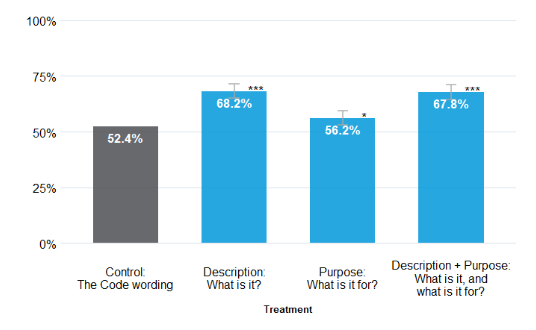As the economic effects of COVID-19 become more apparent, consumers are cutting back on spending. Energy bills are often an area where many people can make savings. However, navigating this market can be a difficult task. Information is often presented in confusing ways that make it harder for people to make good decisions. Part of a regulator’s role is to make this information easier to understand, but this can be a difficult task.
Making energy pricing information easy to understand
In Australia, two regulators, namely the Australian Energy Regulator (AER) and the Australian Competition and Consumer Commission (ACCC), have been leading the way in trying to understand how consumers best interpret pricing information (see our joint report here).
In July 2019, the AER introduced the concept of the ‘reference price’ to the Australian public. This was designed to allow consumers to compare apples with apples across energy offers from different companies. It acts as a benchmark price which must be displayed across all energy ads, enabling consumers to compare different offers to it. However, the AER and ACCC were quick to realise that the specific term ‘reference price’ was not that easy to understand. Therefore, we used a simple, but relatively novel methodology to understand how consumers interpret the term ‘reference price’. We asked them.
Interviews unlocked insights into how people interpreted pricing information
The AER and ACCC’s suspicions that the reference price was not clear was supported by the interviews we did with consumers. Consumers told us they had little idea of what the reference price referred to or what it should be used for. One of our interviewees described the situation very pithily: ”And we have to be smart enough to work out this concept?”
In the second half of the interviews we showed participants mock energy ads containing the reference price and asked them questions to investigate how they understood the information on the ads. Over the course of the interviews, we prototyped and iterated alternative ways of communicating the reference price to improve comprehension (see mock ads below). This methodology has proved illuminating in previous trials, where along with the AER, we found that energy consumers responded more to information that was framed in terms of potential losses more so than equivalent gains, and that energy consumers overestimate their ability to make good decisions based on the information available.
We tested our interview insights using an online RCT
The interviews inspired us to create three ad candidates for explaining the reference price, which we then tested in an online randomized control trial. These candidates were:
- A control ad which used the wording from the established regulatory code
- A descriptive label which stated that the price was set by the Government
- A purpose-based label which highlighted how the reference price should be used
- A combination of the descriptive and the purpose-based label

The methodology involved showing consumers various versions of an energy ad and then asking consumers specific questions to identify their level of comprehension. We compared the three labels against a control group, which used the wording from the regulatory code.
Using clear descriptive language (i.e telling consumers what the price is and who sets it) increased consumer comprehension and their ability to use the reference price to select the best deal on a life-like comparison website. This framing improved comprehension by 15.8%, a finding which will inform the AERs‘ work on the Retail Pricing Information Guideline, and the ACCC’s work enforcing the Electricity Retail Code.
While all the new ways of framing the reference price showed statistically significant increases in comprehension above the control, the framing which clarified who set it had the biggest impact. Describing how the reference price should be used, in addition to what it is, conferred no additional benefit.

This project demonstrates the importance of inviting citizens to the table when designing and implementing policy. The reference price is a useful concept, but only if consumers know what it means and trust the body who sets it. Our trial shows how simpler, non-technical language that is more descriptive and explains concepts – rather than assumes knowledge – can increase comprehension of the reference price and empower consumers to make better decisions when it comes to their energy providers.
If you would like to know more about the work, you can read the report here and you can also drop a line to saul.wodak@bi.team or emma.hunt@bi.team.





